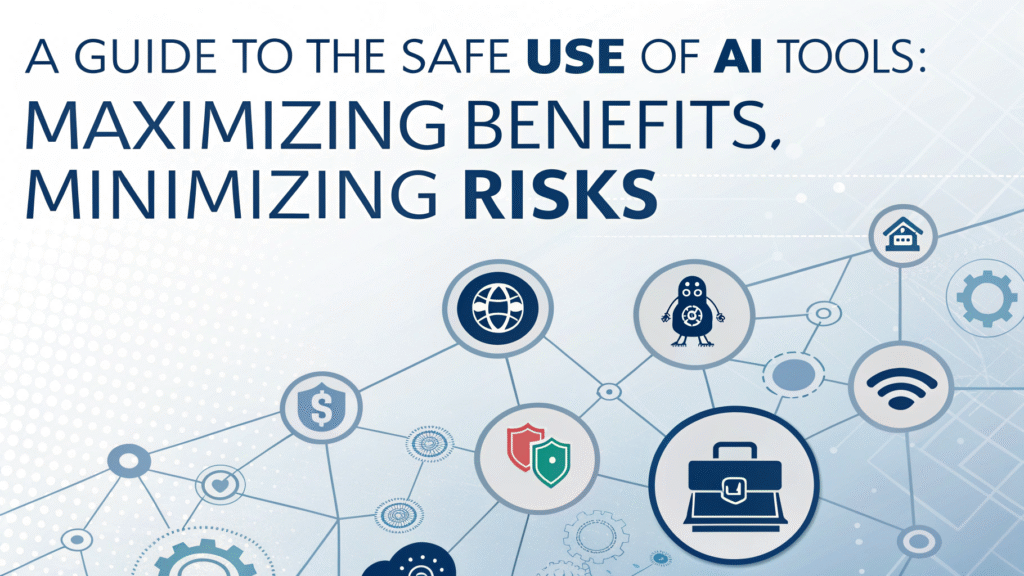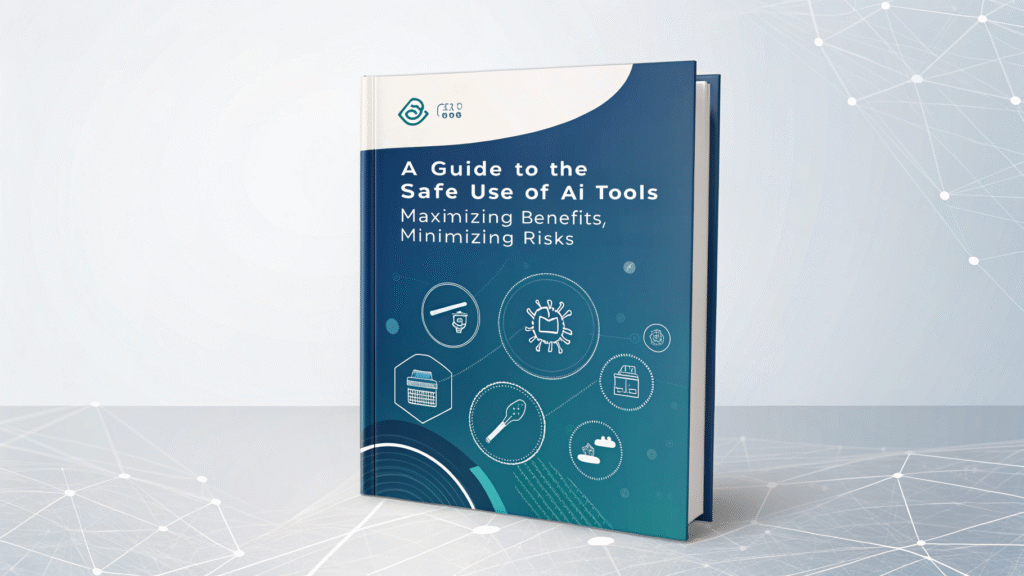
Introduction
Artificial Intelligence has exploded into the mainstream, offering incredible tools for content creation, data analysis, and workflow automation. However, this new power comes with significant responsibility. The safe use of AI tools is no longer a niche concern; it’s a fundamental requirement for any business or creator looking to integrate this technology successfully. This guide will walk you through the essential practices to harness AI’s potential while safeguarding your data, reputation, and intellectual property.
The Rise of AI and the Emergence of Risks
AI tools have evolved from simple, rule-based algorithms to complex large language models and generative systems. Initially used for narrow tasks like spam filtering, they can now draft legal documents, create marketing campaigns, and generate code. This rapid evolution, however, has outpaced the development of universal safety protocols. Early, unguided adoption led to high-profile incidents of data leaks, biased outputs, and copyright infringement, highlighting the critical need for a structured approach to safety.
Who Needs to Practice Safe AI?
Virtually every professional interacting with AI should be mindful of these principles.
- Entrepreneurs & Business Leaders: Responsible for company-wide data security, legal compliance, and brand integrity.
- Marketers & Content Creators: Handle customer data and produce public-facing content where accuracy and originality are paramount.
- Freelancers & Consultants: Must protect their clients’ confidential information and uphold professional standards.
- HR Professionals & Recruiters: Use AI for screening, necessitating vigilance against algorithmic bias.
- Any Employee Using AI: Individual responsibility is the first line of defense in the safe use of AI tools within an organization.
Core Principles for Safe AI Interaction
Understanding how to interact with AI safely hinges on a few key concepts.
- Data Privacy & Confidentiality: AI models can learn from your inputs. Never share sensitive, proprietary, or personal data.
- Bias Awareness: AI can amplify societal biases present in its training data. Always critically review outputs for fairness and inclusivity.
- Human-in-the-Loop: AI is a tool for augmentation, not replacement. Human oversight is non-negotiable for fact-checking, refining, and providing ethical judgment.
- Intellectual Property (IP) Clarity: The legal landscape around AI-generated content is evolving. Understand the IP policies of the tools you use.
Unlocking Business Potential Safely
When used responsibly, AI is a powerful competitive advantage.
- Secure Innovation: Safely brainstorm and prototype ideas without exposing your core IP.
- Efficient & Compliant Marketing: Generate drafts and ideas at scale while ensuring all public content is vetted and accurate.
- Data-Driven Decisions with Context: Use AI to analyze market trends while using human expertise to interpret the “why” behind the data.
- Enhanced Customer Service: Deploy AI chatbots for common queries, programmed with strict guardrails to protect customer privacy and escalate complex issues.
Best Practices for the Safe Use of AI Tools
Implement these actionable tips to build a robust safety framework.
- 1. Master the Art of Prompting: Clear, specific prompts reduce the chance of vague or incorrect outputs, minimizing the need for rework.
- 2. Implement a Strict Data Policy:
- Anonymize Data: Remove any personally identifiable information (PII) before feeding data into an AI.
- Use On-Premise Solutions: For highly sensitive data, consider enterprise-grade AI that runs on your own servers.
- 3. Always Fact-Check and Edit: Never publish AI-generated content verbatim. Treat every output as a first draft that requires human verification.
- 4. Understand the Tool’s Terms of Service: Read the fine print. Know how the provider handles your data and what rights you have over the generated content.
- 5. Conduct Regular AI Audits: Periodically review how your team uses AI tools to ensure compliance with your internal safety policies.
- 6. Foster a Culture of Training: Ensure everyone in your organization understands the principles of the safe use of AI tools.
Navigating Challenges and Limitations
Awareness of potential pitfalls is the first step to avoiding them.
- “Hallucinations” and Inaccuracies: AI can generate plausible-sounding but completely fabricated information. Vigilant fact-checking is essential.
- Data Security Vulnerabilities: Using public AI models for confidential work is a major risk. A single prompt could inadvertently become part of the model’s training data.
- Embedded Bias: An AI might generate content that reflects gender, racial, or cultural stereotypes, potentially damaging your brand’s reputation.
- Legal and Copyright Gray Areas: Who owns an article or image created by AI? The law is still catching up, creating uncertainty for creators.
The Future of AI Safety
The ecosystem for safe AI is rapidly maturing.
- Advanced “Constitutional AI”: Future models will have stricter, more nuanced internal guardrails to prevent harmful outputs.
- Standardized Auditing and Certification: Independent bodies will likely emerge to certify AI tools for safety and ethical compliance, similar to ISO standards.
- Tighter Regulations: Governments worldwide are developing legislation (like the EU AI Act) that will mandate stricter safety and transparency requirements.
- Explainable AI (XAI): Tools will become better at explaining why they generated a particular output, making it easier to identify and correct biases or errors.

Conclusion
The safe use of AI tools is the cornerstone of sustainable and ethical innovation. By adopting a proactive, informed approach, you can confidently leverage AI to drive growth and creativity. Remember, the goal is not to avoid these powerful tools but to master them with wisdom and caution. Implement these best practices, stay informed on evolving standards, and you will be well-positioned to thrive in the AI-augmented future, reaping the rewards while skillfully managing the risks.